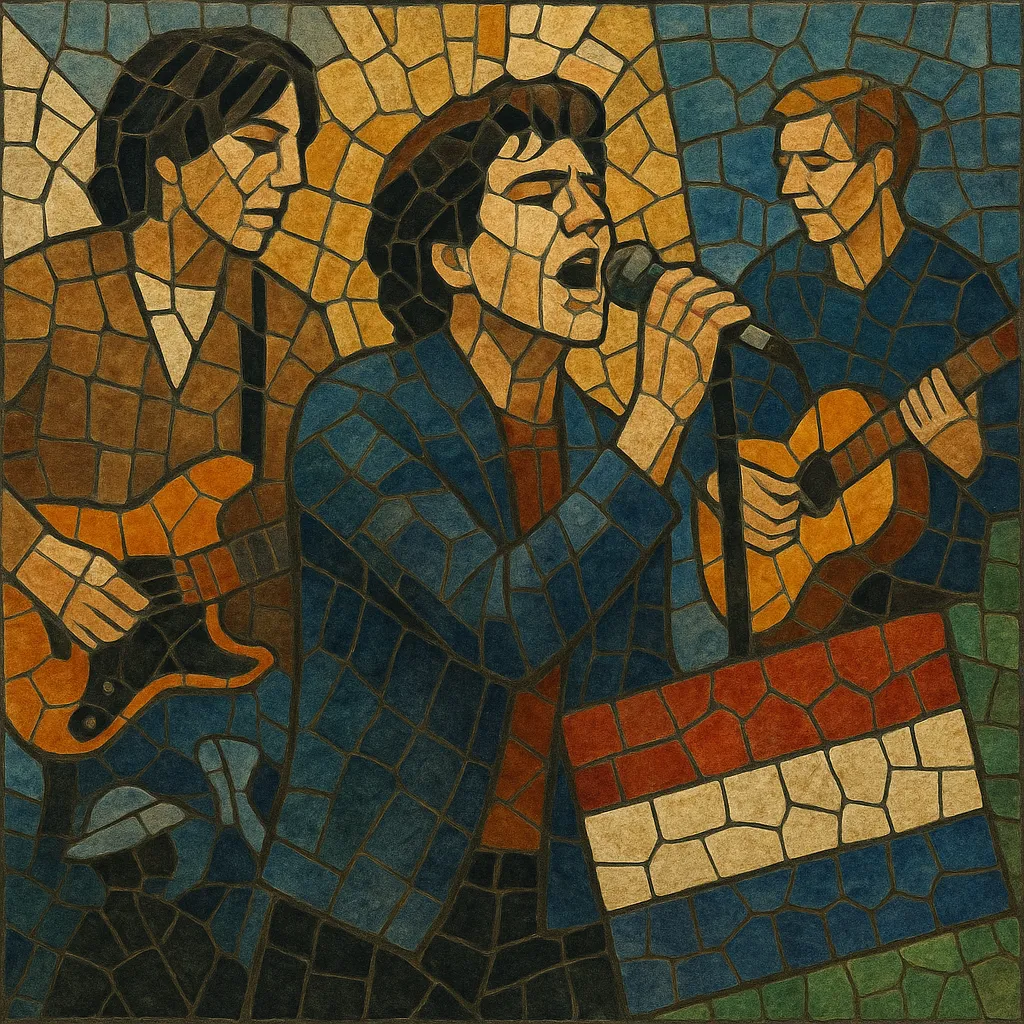Nederpop is a broad term for pop and rock made in the Netherlands, most often sung in Dutch and characterized by strong hooks, sing‑along choruses, and accessible storytelling. While it includes a range of sounds—from guitar‑based pop rock to synth‑driven new wave and even reggae‑tinged rhythms—it stays centered on melody and lyrical immediacy.
The style coalesced as a recognizable movement in the late 1970s and surged in the 1980s, when bands adopted new wave textures and occasional ska/reggae grooves. In the 1990s and 2000s, nederpop became mainstream adult pop, with polished production, emotive ballads, and stadium‑sized choruses, often addressing everyday life, love, and social themes.
Dutch popular music in the 1960s drew heavily on beat music and rock, laying a foundation for a distinct local scene. Singer‑songwriters and pop acts such as Boudewijn de Groot and Ramses Shaffy established Dutch‑language lyricism as a strength. By the late 1970s, the umbrella term “nederpop” came into common use to denote pop/rock from the Netherlands, increasingly performed in Dutch and shaped by international pop trends.
The 1980s marked the first major wave of nederpop’s popularity. Bands like Doe Maar blended pop with reggae/ska upstrokes and socially aware lyrics, while Het Goede Doel, Frank Boeijen Groep, and Klein Orkest brought sleek new wave and synth‑pop textures into mainstream Dutch‑language hits. The era cemented nederpop’s identity: melodic, hook‑forward, contemporary in sound, and proudly local in language.
In the 1990s and early 2000s, nederpop matured into radio‑friendly adult pop and pop rock. Marco Borsato, BLØF, Guus Meeuwis, and De Dijk dominated charts with polished productions, anthemic choruses, and emotive narratives. Parallel scenes—like the Volendam “palingsound”—brought a smooth, harmony‑rich flavor to the mainstream. Nederpop’s reach expanded via television, festivals, and national awards, reinforcing its place at the heart of Dutch popular culture.
A new generation refreshed the genre with nuanced production and indie sensibilities. Artists such as Spinvis and later contemporary acts embraced poetic, introspective lyrics, while bands like Racoon increasingly favored Dutch‑language releases. Today, nederpop spans glossy radio pop, thoughtful singer‑songwriting, and pop‑rock, maintaining its core traits of melodic clarity and Dutch storytelling.
Use a pop/rock core: drums, electric bass, electric/acoustic guitars, and keyboards/synths. For 1980s‑flavored tracks, feature chorus‑rich guitars and analog‑style synths; for reggae‑tinged pieces (à la Doe Maar), accent rhythm guitar upstrokes and tight, round bass.
Prioritize strong, sing‑along melodies in major keys with clear tonal centers. Common harmonic movement includes I–V–vi–IV, ii–V–I, and IV–I cadences. Pre‑chorus lift chords and suspended voicings add anticipation before big choruses.
For mainstream pop rock, use steady 4/4 with driving eighth‑note guitars and punchy snare on 2 and 4. To evoke the 1980s wave, add syncopated synth arpeggios and gated or bright reverb on snares. For reggae/ska inflections, emphasize off‑beats with guitar chops and a bass that anchors the downbeat.
Write in Dutch (including regional dialects if desired). Focus on everyday life, relationships, personal reflection, and socially aware themes. Keep lines direct and memorable, with vivid images and conversational turns of phrase; choruses should resolve the lyrical idea succinctly.
Use verse–pre‑chorus–chorus structures, often with a middle‑eight bridge for contrast. Start sparse and build layers—pads, harmonies, countermelodies—toward the final chorus. Background vocals or gang‑style harmonies strengthen hooks.
For classic nederpop, aim for clean, radio‑friendly mixes with forward vocals and crisp drums. 1980s shades: chorus/flanger on guitars, warm synth pads, and bright reverbs. Contemporary tracks favor balanced low end, modern vocal processing (subtle tuning/doubling), and tasteful dynamics for streaming platforms.


